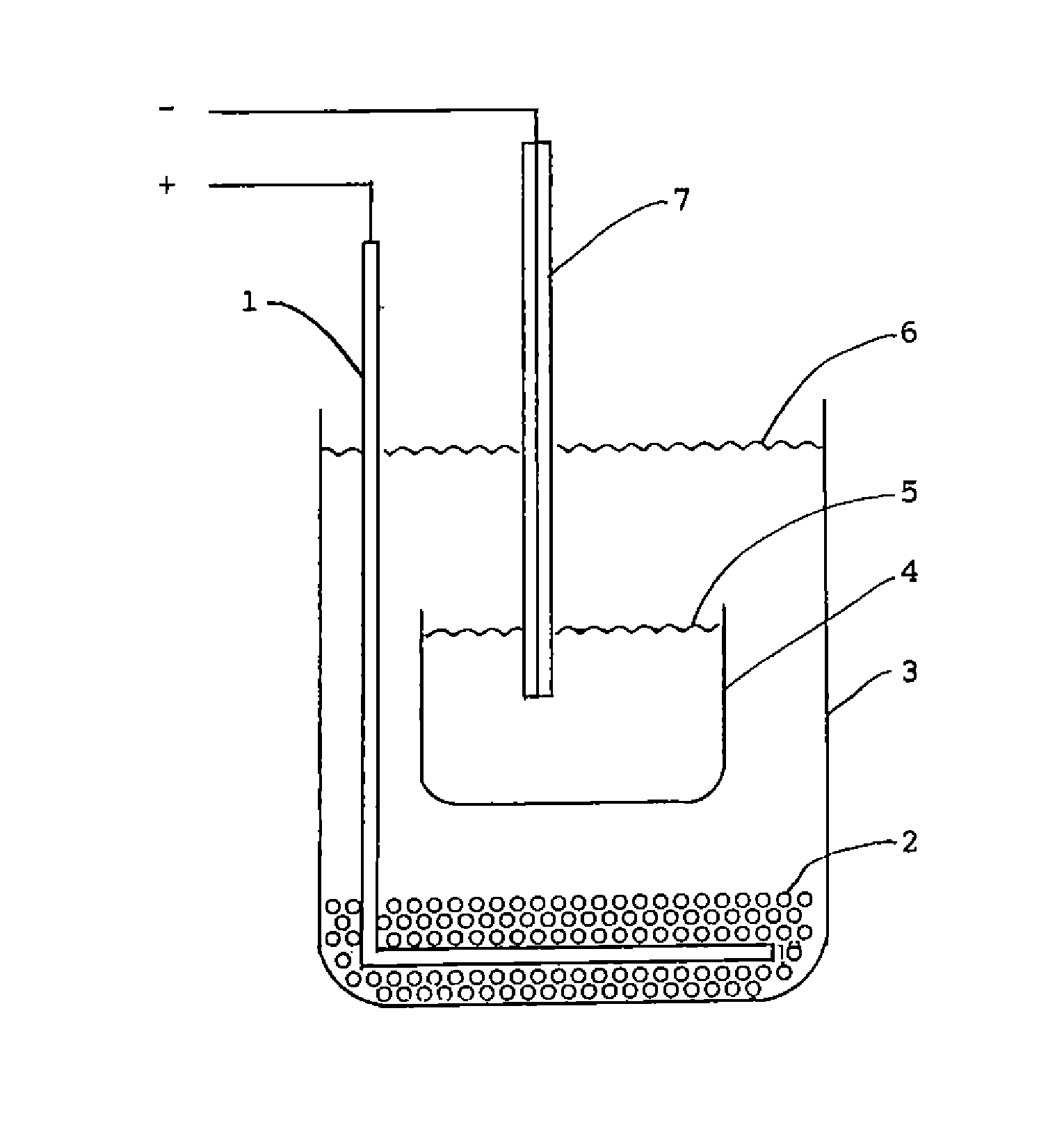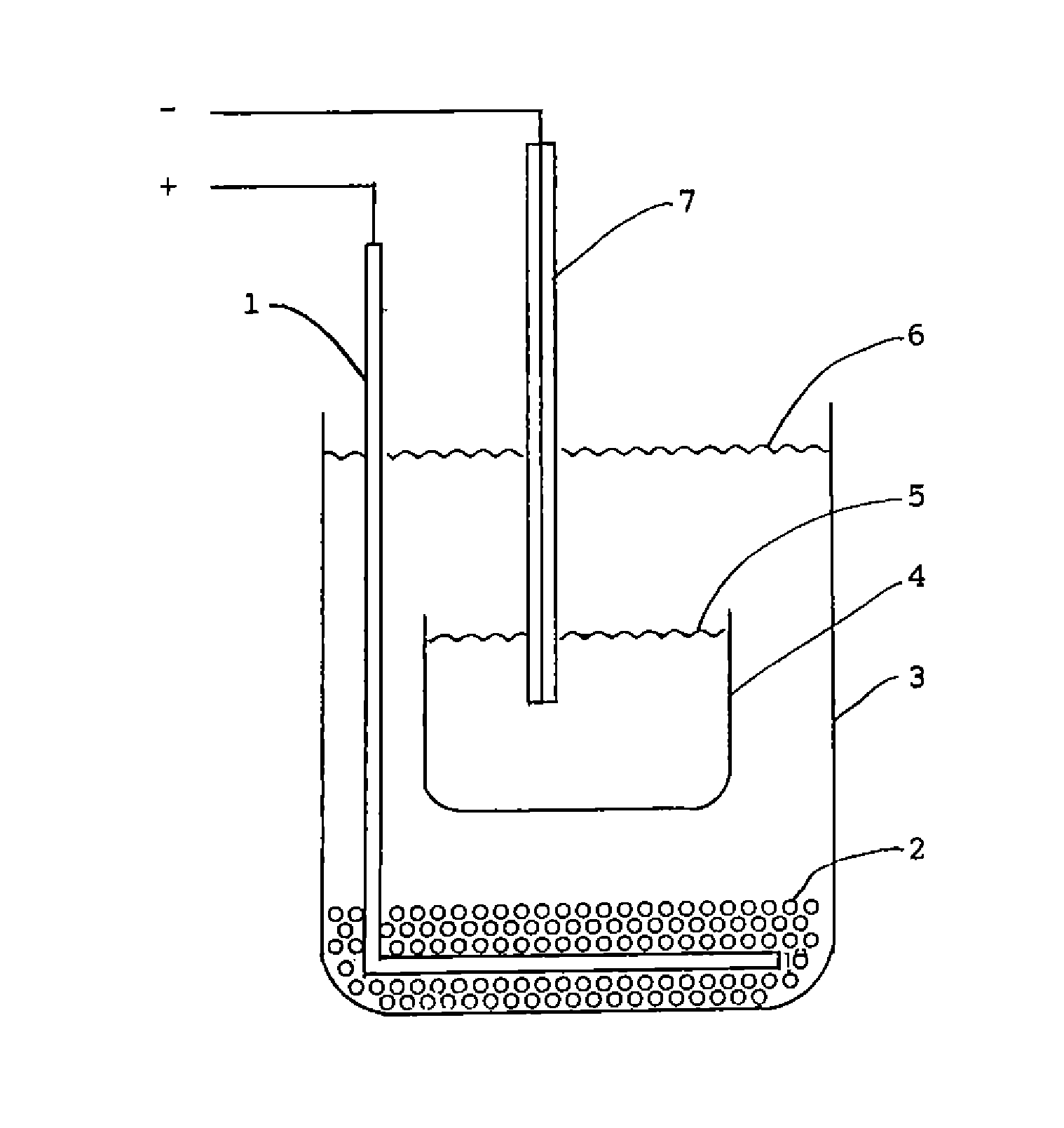Aluminum storage battery
a technology of storage batteries and aluminum, applied in the direction of non-aqueous electrolyte cells, cell components, electrochemical generators, etc., can solve the problems of metal hampering the performance of anodes, aluminum batteries have eluded commercialization,
- Summary
- Abstract
- Description
- Claims
- Application Information
AI Technical Summary
Benefits of technology
Problems solved by technology
Method used
Image
Examples
example
[0020]An experimental cell was assembled from a large glass jar 3 in. in diameter by 2.5 in. high and a small glass jar 2 in. in diameter by 1.25 in. high. The positive electrode was a 2.5 diameter lead disc embedded in a half-inch thick layer of lead shot No. 10. The negative electrode comprised 250 gm. of liquid gallium 99.99 percent (metal basis). This electrode was connected to the negative lead by a hollow glass tube containing a copper wire. For the electrolyte, 86.8 gm. of aluminum sulfate octadecahydrate, 98+ percent ACS, was dissolved in 150 ml, water. During the experiment the cell was held at about 86° F. After charging the battery at 3.5 volts for 7 minutes, a cell potential of 2.05 volts was obtained. Upon discharging, a steady current of 40 milliamps was obtained through a flashlight bulb. At the end of the run, the electrodes were in excellent condition and the electrolyte was water-white.
PUM
| Property | Measurement | Unit |
|---|---|---|
| electric potential | aaaaa | aaaaa |
| atomic weight | aaaaa | aaaaa |
| electrochemical equivalence | aaaaa | aaaaa |
Abstract
Description
Claims
Application Information
 Login to View More
Login to View More - R&D
- Intellectual Property
- Life Sciences
- Materials
- Tech Scout
- Unparalleled Data Quality
- Higher Quality Content
- 60% Fewer Hallucinations
Browse by: Latest US Patents, China's latest patents, Technical Efficacy Thesaurus, Application Domain, Technology Topic, Popular Technical Reports.
© 2025 PatSnap. All rights reserved.Legal|Privacy policy|Modern Slavery Act Transparency Statement|Sitemap|About US| Contact US: help@patsnap.com


